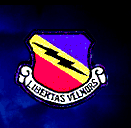| CHAPTER 25
MOTHER OF ALL BATTLESDesert Storm began with a fury,
and, according to CNN, allied air power was devastating the Iraqi military structure. Command-and-control centers, radar sites, ammunition depots, power plants, SAM sites, railroad yards, bridges, fuel depots, and Saddam Hussein's presidential palace had been hit. Major air bases at Irbil, H-2, H-3, Basrah, Habbaniyah, An Nasiriyah, Karkuk, and Mosul were destroyed. CNN reported other targets on the allied hit list: chemical and biological weapons plants in Akashat, Al
Iskandariyah, Al Musayyib, Badush, Baghdad, Bayji, Samarra, and Salman Pak; rocket and ballistic missile plants in Fallujah, Hillah, Karbala, and Mosul; petroleum refineries in Karkuk, Baghdad, and Basrah; nuclear power plants in Basrah, Dibis, and Baghdad; the Scud missile production facility in Latifya; and nuclear weapons factories in Tawaitha, Mosul, and Irbil. After Col. Navarro shut down the phones, CNN became our only link to the outside world. If a pilot wasn't
sleeping, on MPC duty, or flying a sortie, he was on an o'club
couch, watching CNN. Listening to Bernard Shaw, Peter Arnett, and John Holliman describe the beginning of the war was incredible. So too were videotapes of laser-guided "smart bombs" destroying military targets in Baghdad, and the infrared pictures of SAMs and AAA rocketing skyward toward allied aircraft. Flying through that barrage was terrifying. Seeing it on television a day later made the event seem even more horrific. | |



